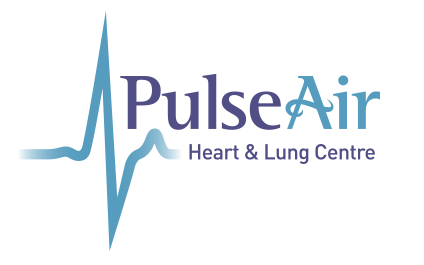Pulmonary hypertension (PH) is a complex and debilitating condition that affects the lungs and heart. At PulseAir Heart and Lung Centre, we understand the importance of raising awareness and providing education on this condition to help patients manage their symptoms and improve their quality of life. Let’s delve into the world of pulmonary hypertension, exploring its causes, symptoms, diagnosis, and management options.
What is Pulmonary Hypertension?
Pulmonary hypertension is a type of high blood pressure that affects the arteries in the lungs. It occurs when the blood vessels in the lungs become narrowed or blocked, making it difficult for blood to flow through the lungs and pick up oxygen. As a result, the heart must work harder to pump blood through the lungs, leading to strain on the heart and potentially causing it to fail.
Causes of Pulmonary Hypertension
Pulmonary hypertension can be caused by a variety of factors, including:
- Genetics: Some people may be born with a genetic predisposition to develop PH.
- Lung disease: Conditions such as chronic obstructive pulmonary disease (COPD), pulmonary fibrosis, and cystic fibrosis can increase the risk of developing PH.
- Heart disease: Heart conditions such as mitral valve disease, atrial septal defects, and ventricular septal defects can lead to PH.
- Blood clots: Blood clots in the lungs can increase pressure in the pulmonary arteries.
- Other medical conditions: Conditions such as scleroderma, lupus, and HIV can increase the risk of developing PH.
Symptoms of Pulmonary Hypertension
The symptoms of pulmonary hypertension can be subtle and may not appear until the condition is advanced. Common symptoms include:
- Shortness of breath: Feeling winded even when doing simple tasks
- Fatigue: Feeling tired or weak
- Dizziness or lightheadedness: Feeling like you might pass out
- Chest pain: Pain or discomfort in the chest area
- Swollen legs and ankles: Fluid buildup in the legs and ankles
Diagnosing Pulmonary Hypertension
Diagnosing pulmonary hypertension typically involves a combination of tests, including:
- Echocardiogram: A non-invasive test that uses sound waves to create images of the heart and lungs.
- Right heart catheterization: A minimally invasive test that uses a catheter to measure the pressure in the pulmonary arteries.
- Blood tests: Tests to rule out other conditions that may be causing symptoms.
- Imaging tests: Tests such as CT or MRI scans to visualize the lungs and heart.
Managing Pulmonary Hypertension
While there is no cure for pulmonary hypertension, there are several treatment options available to manage symptoms and slow the progression of the disease. These include:
- Medications: Medications to reduce blood pressure, improve blood flow, and reduce symptoms.
- Oxygen therapy: Breathing oxygen-rich air to help increase oxygen levels in the blood.
- Lifestyle changes: Making lifestyle changes such as quitting smoking, exercising regularly, and eating a healthy diet.
- Pulmonary rehabilitation: A program of exercise, education, and support to help manage symptoms and improve quality of life.
Conclusion
Pulmonary hypertension is a complex and challenging condition that requires careful management and treatment. At PulseAir Heart and Lung Centre, we're committed to providing our patients with the highest level of care and education to help them manage their symptoms and improve their quality of life.
Learn More About PulseAir Heart and Lung Centre
At PulseAir, we offer a range of services and treatments to help you manage your lung health, including pulmonary function testing, sleep studies, and cardiopulmonary rehabilitation. To learn more about our services and how we can help you, visit our website at https://pulseair.ca/.
Take Control of Your Lung Health
By understanding pulmonary hypertension and its causes, symptoms, and treatment options, you can take control of your lung health and improve your quality of life. Remember to stay informed, stay proactive, and breathe easy!


